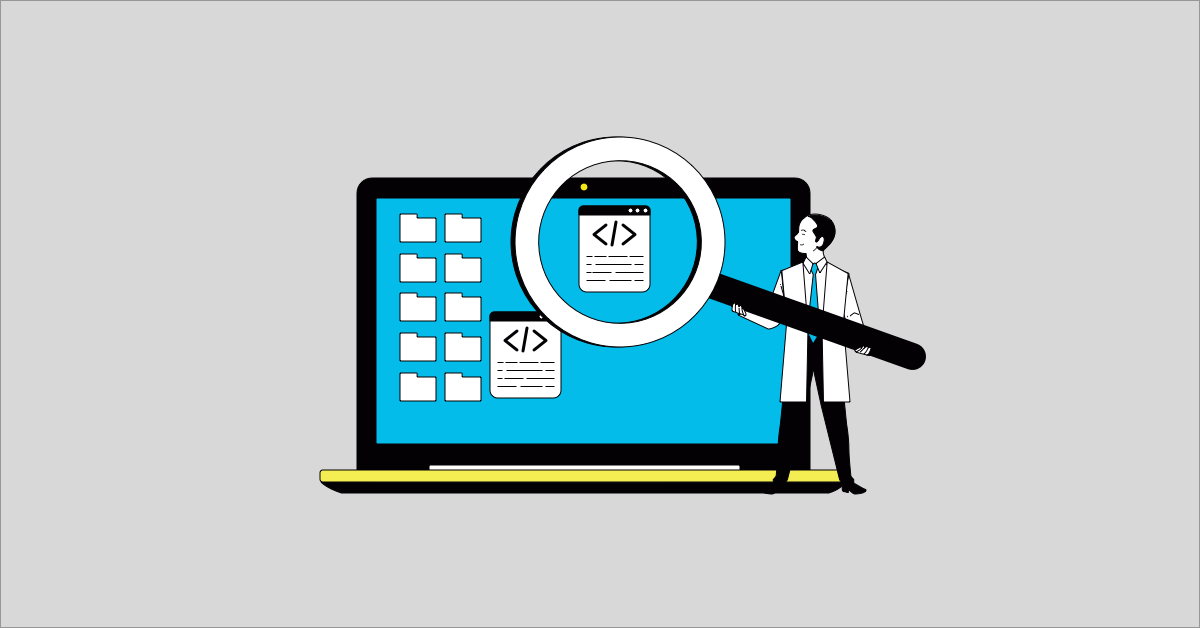Database testing, or DB testing, is a significant and complementary part of the testing process. It’s a multi-step, multi-angle approach to assessing the database and how it functions with the user interface and maintains data storage, integrity, retrieval, and updating.
There are multiple layers of the database testing process, and we’re going to go over them in this post, but for a little context, let’s cover what database testing is and why it’s important.
User Interface vs. Database Testing
To help describe database testing, it’s useful to separate it from user interface testing, which is more commonly discussed.
The Graphical User Interface (GUI) is the face of your website and, as such, will be the frontend point of contact for your users. As such, it’s critically important that it runs smoothly and presents a frictionless customer experience. This can sometimes lead to a disproportionate amount of GUI testing at the expense of the database (you’ll see why this is a mistake in the next section).
So, while GUI testing involves the functionality of buttons, menus, and navigation, database testing focuses more on checking storage procedures, indexes, and keys. These are the backend components handled by the server and stored in the database itself. The storage and interactions between and within these components are what database testing covers.
Methods of database testing can involve putting a heavy or complex load into the system to check how it responds, or simply checking the syntax and arrangement of code, depending on which part of the testing process is needed. Regardless, it requires a thorough understanding of concepts such as procedures & functions and, in most cases, applicable knowledge of SQL.
Importance of DB Testing
Database testing ensures the retrieval of data in the condition that it was stored, as well as the updating of components by the user without loss of useful information. It also prevents partially-created information or aborted operation info from being stored. These are critical functions to manage, especially when it comes to scaling up to more complex applications.
It also facilitates data security, meaning data is stored correctly and with integrity. Without this security, there can be issues with data corruption and deadlock, or even worse, breaches involving the release of personal details like credit cards and addresses.
Procedures and views, for example, are responsible for critical tasks such as updating or inserting these customer data and, therefore, must be tested thoroughly.
Further, properly implemented data mapping reduces the strain of calls to the backend.
It’s important to test the entire create, retrieve, update and delete functions in relation to frontend inputs to streamline the user experience and protect the data. This creates a scalable and responsive framework for expanding your software.
Ultimately, as the complexity of your software increases, the need for a robust and accessible database follows suit. In addition, it is the foundation for running a comfortable GUI that enhances user experience and, therefore, company success.
3 Types of Database Testing
Database testing can be broken into three kinds:
This is a form of testing that covers the very foundation of the database. It includes schema testing, which verifies that the frontend and backend schema mappings are similar enough; table and column testing, which addresses compatibility issues between data types and field length; keys and indexes, which verifies that naming conventions have been followed; and trigger testing, which verifies that coding conventions for triggers have been followed and whether they are updating correctly on execution.
This part of database testing is conducted with the user in mind. It’s designed to ensure that the database’s functional elements match the user’s requirements as expected. For example, this might involve the tester making sure a mandatory field in a form will accept no input or whether there is enough character limit or length size to accommodate what the form is asking. This form of testing will also cover data integrity and login/user security, i.e., that the database will not allow the user to proceed with an invalid password. This can also be done through the backend using CRUD testing.
This category has numerous subcategories of testing based on the business requirements, including load, stress, and usability testing. Load testing establishes a threshold for the number of users the database can handle, and stress testing similarly gives an idea of how many errors can be managed under load conditions.
Each approach forms a comprehensive database testing program and, with a few best practices, helps create a robust and scalable framework.
Database Testing Best Practices
Database testing best practices can be thought of in terms of a checklist. First of all, database tests should cover the following categories:
- Validity tests
- Integrity tests
- Performance tests
- Procedure, functions, and trigger testing
Then, it’s simply a matter of listing out some best practices to include in your database testing:
Data Mapping:
Check syntax, the table, column, and data mapping, and run each script with and without records in destination tables.
ACID Validation:
Validation for Atomicity, Consistency, Isolation, and Durability comprise ACID. This is a set of principles common in database testing that ensure that an entire operation is successfully finished by a commit (atomicity); any change does not affect the integrity of the system (consistency); separate transactions cannot affect the reads and writes of one another (isolation), and successful commits are kept (durability). The data must be rolled back if any of these principles are broken.
Data Integrity/Redundancy:
All data should be included only once and must be available to all necessary users. It also needs to be accurate and function as expected.
Backup & Recovery:
Rollbacks require adequate backup and recovery practices, so factor these into your testing.
DB Testing Steps
Putting it all into practice, you have the following core steps for database testing.
The following are the core steps:
- Setup – Prepare the environment for database testing; if preparing test scripts, keep scalability and reuse in mind for future applications.
- Performance – This is the active stage in the testing process. This is where any tweaking can be done to make the scripts more robust.
- Verification – Compare the output with the expected example. This will determine whether a test has passed or failed.
- Teardown – At this stage, it might be time to run another test or remove all test residue from the environment. As your app grows, this might become a tedious job, so in some cases, it’s possible to set up the DB once and roll back instead of committing.
- Report – This comes at the end of the entire process, where the findings need to be presented to the stakeholders.
- Reuse – If you’ve followed the steps and best practices, chances are you now have tests that can handle many future sets or even schedule the test case for execution at the desired time as part of automation.
Conclusion
Effective DB testing will improve the expansion and functionality from the backend to the user experience at whatever stage your application is at.
It’s a very different yet complementary form of testing than the typical GUI testing, and as such, it must be factored into the product testing timeline. However, when done properly, it’s not a particularly difficult task, and much of it can even be automated.
The key concepts to remember in your database testing are planning for scalability and streamlining the user experience by reducing the strain of calls to the backend. Then, following best practices, you’re just a few steps away from improving your application and preparing for growth.




